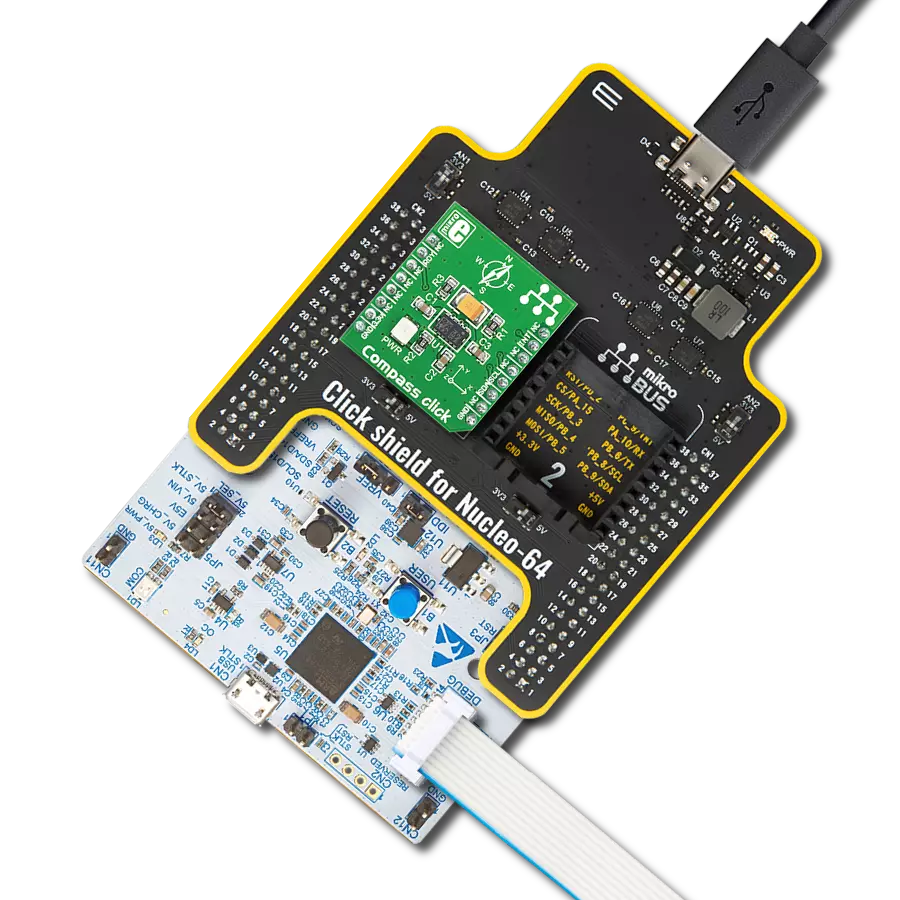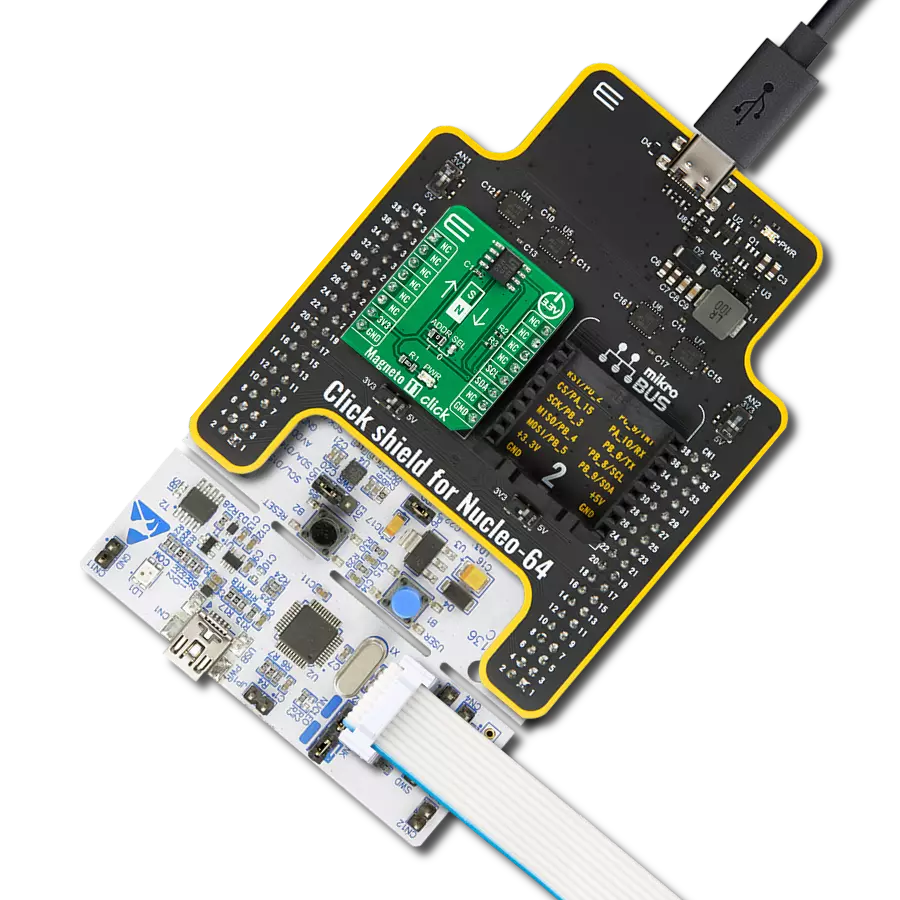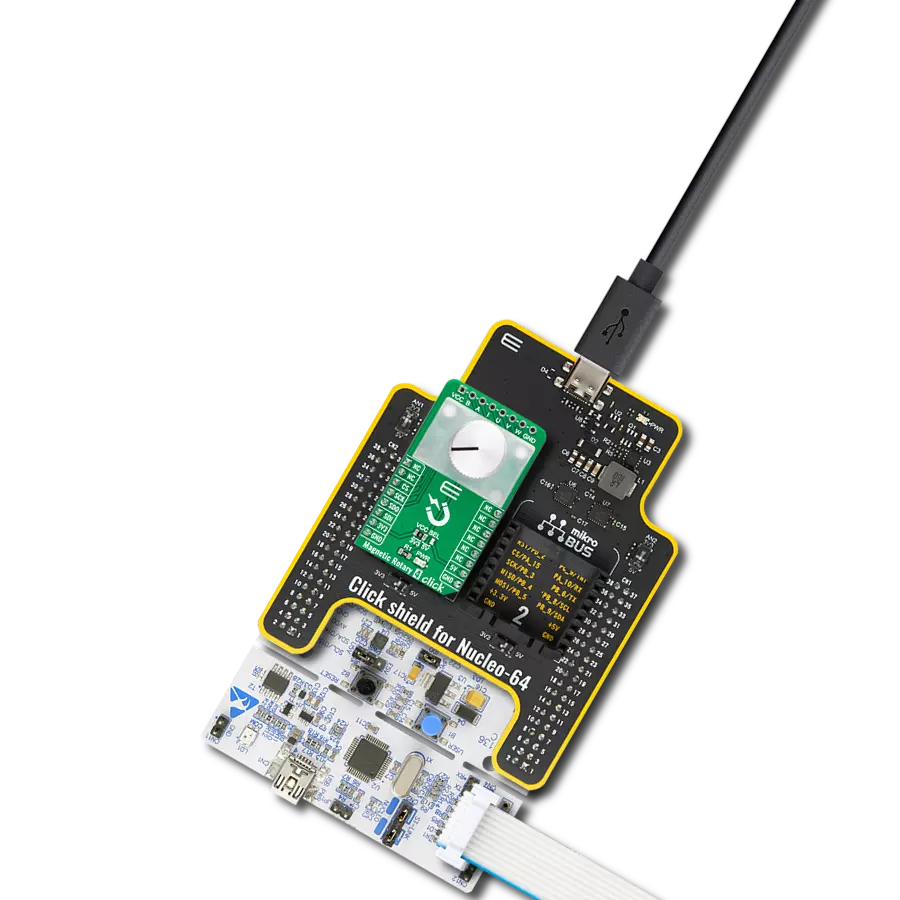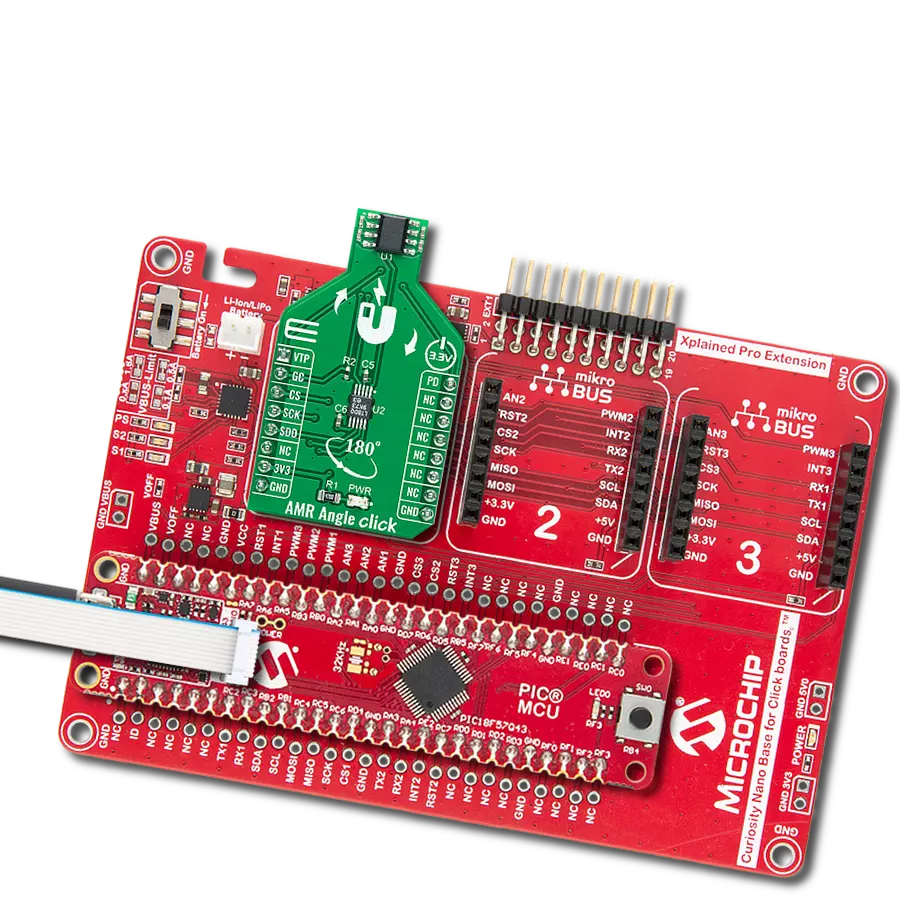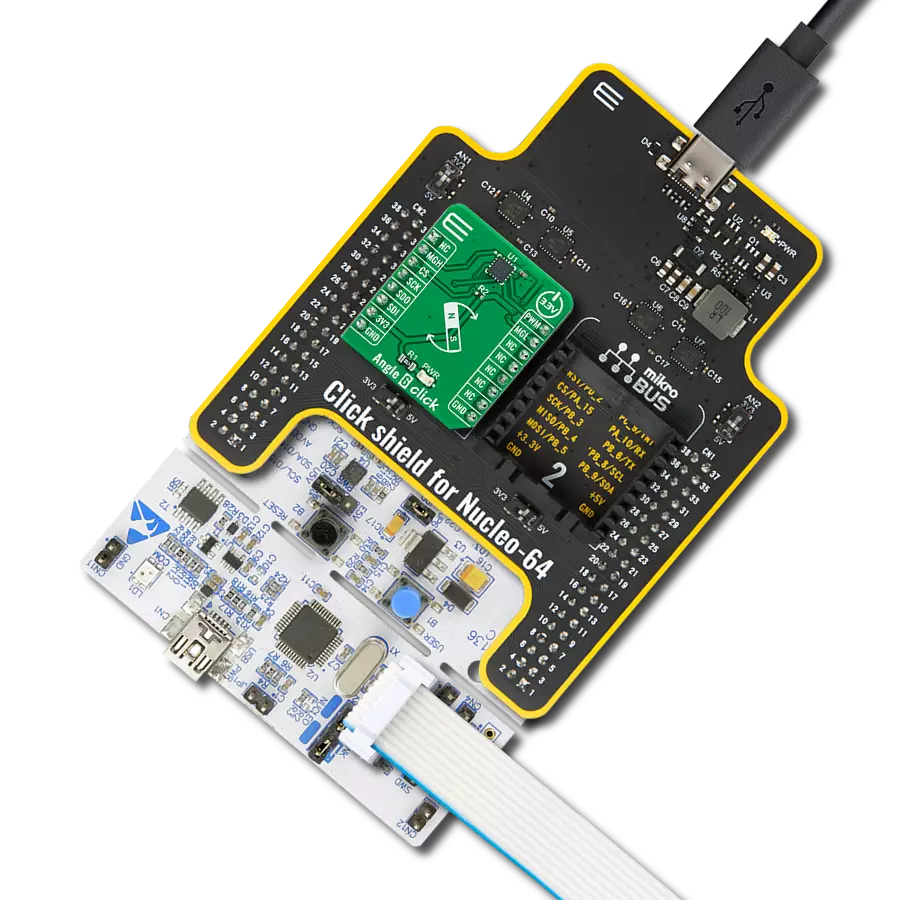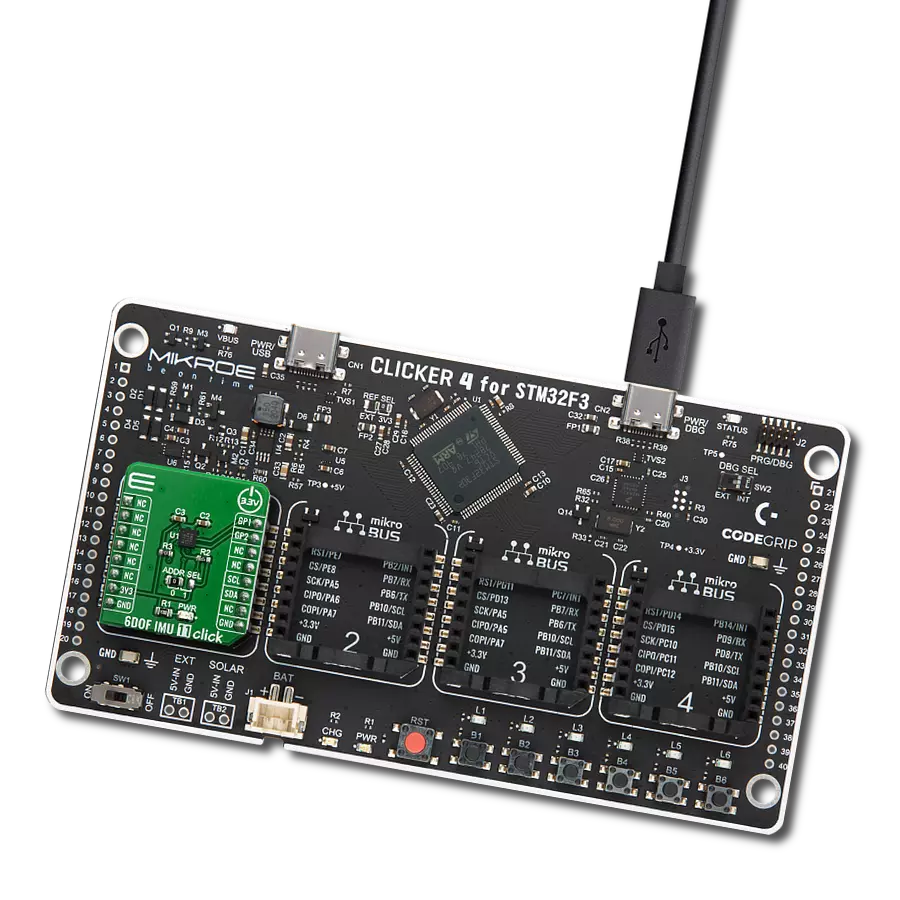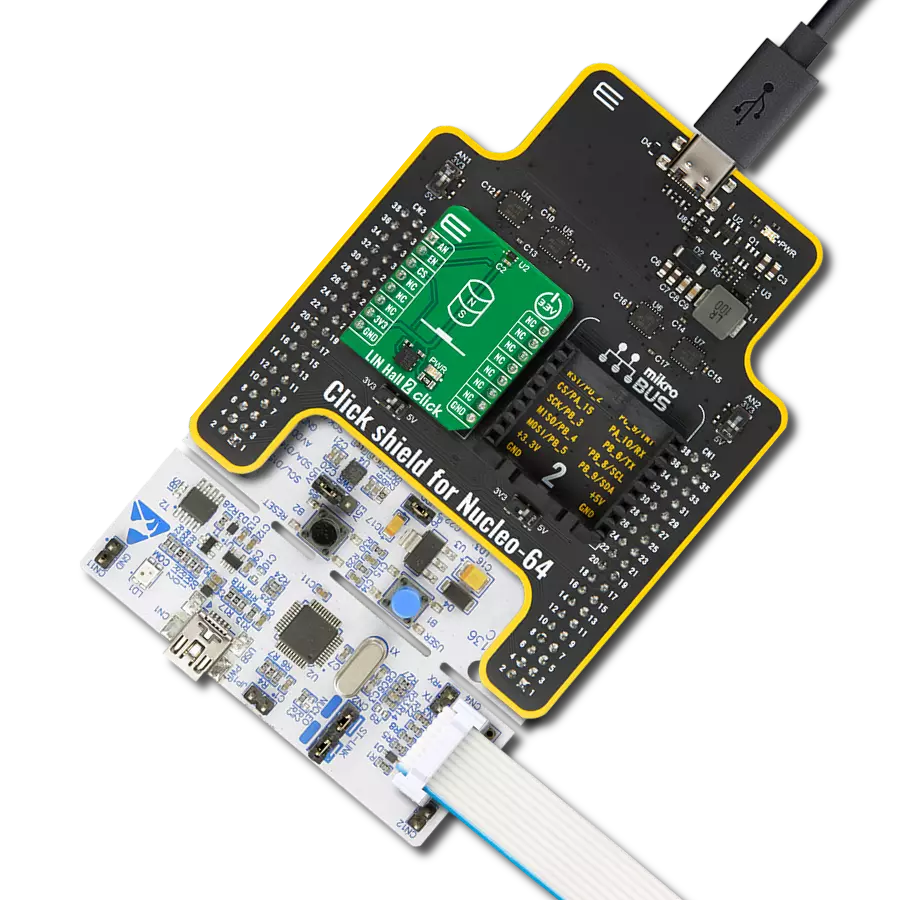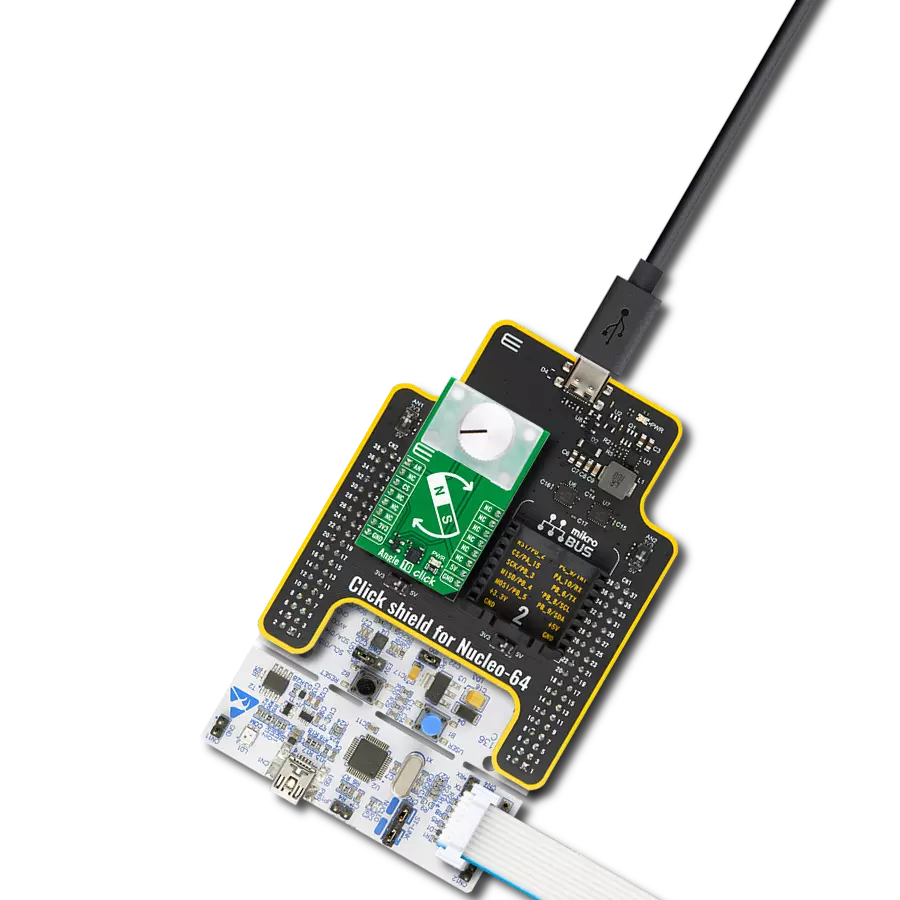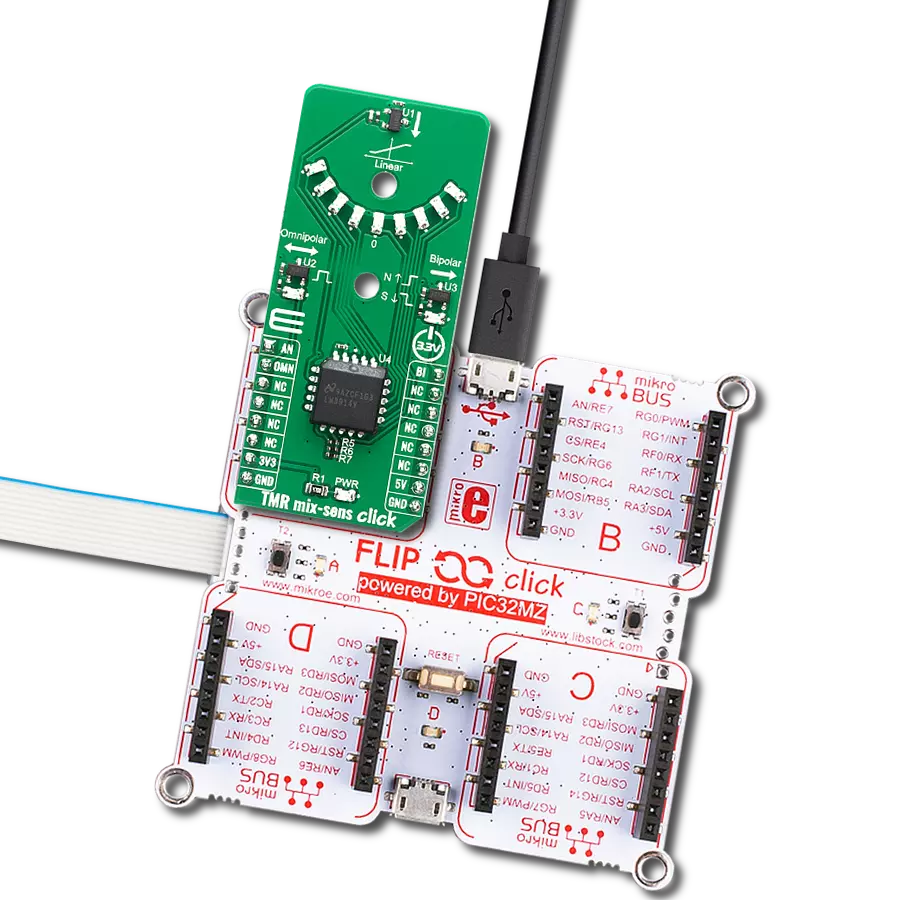Explore the world with confidence using our electronic compass technology, offering unparalleled accuracy and ease of use
A
A
Hardware Overview
How does it work?
Compass 6 Click is based on the HSCDTD008A, a high-sensitivity three-axis terrestrial magnetism sensor from ALPS Alpine. It has an integrated drive circuit, signal processing circuit, and serial interface block, allowing low noise and high resolution. The HSCDTD008A can measure magnetic field strengths of ±2.4mT on each of its three axes and provides an output resolution of 0.15µT/LSB. This Click board™ represents a perfect choice for implementation in applications such as an electronic compass. At the beginning of the operation, all internal circuits and registers are set to the default state by turning the power ON. The
operating mode is automatically set to a low-power Standby mode by Power-On reset. In addition to the Standby mode, this sensor has an Active mode for power control accessible through a register command. The active mode has two states: the force state, which starts measurement and outputs data by register command, and the Normal state, which performs measurement and outputs data using the internal timer trigger. Compass 6 Click communicates with MCU using the standard I2C 2-Wire interface to read data and configure settings, supporting Standard Mode operation with a clock frequency of 100kHz, Fast
Mode up to 400kHz, and Fast Mode Plus up to 1MHz, in addition to the High-Speed Mode. It also features an additional ready signal, labeled as RDY and routed on the INT pin of the mikroBUS™ socket, that informs when new measured results for the host are updated. This Click board™ can be operated only with a 3.3V logic voltage level. The board must perform appropriate logic voltage level conversion before using MCUs with different logic levels. Also, it comes equipped with a library containing functions and an example code that can be used as a reference for further development.
Features overview
Development board
Flip&Click PIC32MZ is a compact development board designed as a complete solution that brings the flexibility of add-on Click boards™ to your favorite microcontroller, making it a perfect starter kit for implementing your ideas. It comes with an onboard 32-bit PIC32MZ microcontroller, the PIC32MZ2048EFH100 from Microchip, four mikroBUS™ sockets for Click board™ connectivity, two USB connectors, LED indicators, buttons, debugger/programmer connectors, and two headers compatible with Arduino-UNO pinout. Thanks to innovative manufacturing technology,
it allows you to build gadgets with unique functionalities and features quickly. Each part of the Flip&Click PIC32MZ development kit contains the components necessary for the most efficient operation of the same board. In addition, there is the possibility of choosing the Flip&Click PIC32MZ programming method, using the chipKIT bootloader (Arduino-style development environment) or our USB HID bootloader using mikroC, mikroBasic, and mikroPascal for PIC32. This kit includes a clean and regulated power supply block through the USB Type-C (USB-C) connector. All communication
methods that mikroBUS™ itself supports are on this board, including the well-established mikroBUS™ socket, user-configurable buttons, and LED indicators. Flip&Click PIC32MZ development kit allows you to create a new application in minutes. Natively supported by Mikroe software tools, it covers many aspects of prototyping thanks to a considerable number of different Click boards™ (over a thousand boards), the number of which is growing every day.
Microcontroller Overview
MCU Card / MCU
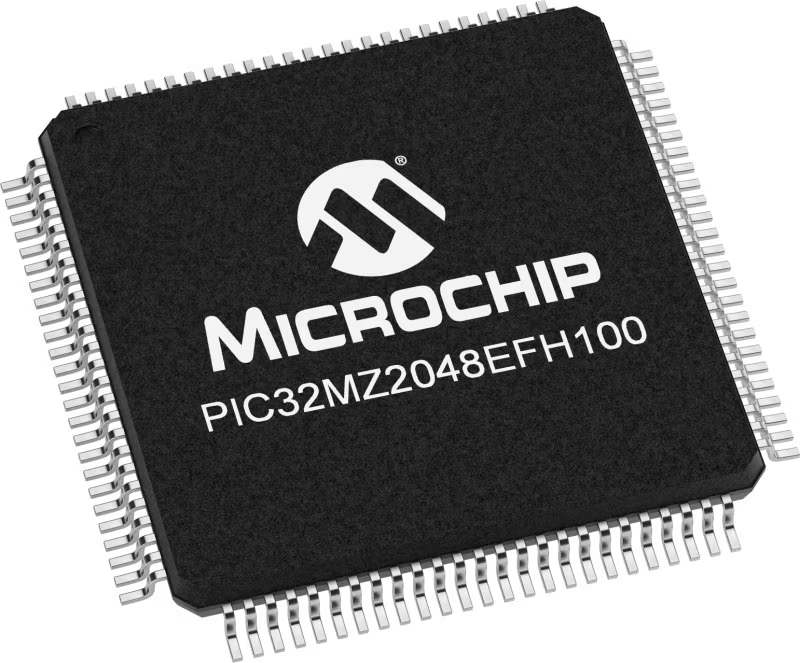
Architecture
PIC32
MCU Memory (KB)
2048
Silicon Vendor
Microchip
Pin count
100
RAM (Bytes)
524288
Used MCU Pins
mikroBUS™ mapper
Take a closer look
Click board™ Schematic

Step by step
Project assembly
Track your results in real time
Application Output
1. Application Output - In Debug mode, the 'Application Output' window enables real-time data monitoring, offering direct insight into execution results. Ensure proper data display by configuring the environment correctly using the provided tutorial.

2. UART Terminal - Use the UART Terminal to monitor data transmission via a USB to UART converter, allowing direct communication between the Click board™ and your development system. Configure the baud rate and other serial settings according to your project's requirements to ensure proper functionality. For step-by-step setup instructions, refer to the provided tutorial.

3. Plot Output - The Plot feature offers a powerful way to visualize real-time sensor data, enabling trend analysis, debugging, and comparison of multiple data points. To set it up correctly, follow the provided tutorial, which includes a step-by-step example of using the Plot feature to display Click board™ readings. To use the Plot feature in your code, use the function: plot(*insert_graph_name*, variable_name);. This is a general format, and it is up to the user to replace 'insert_graph_name' with the actual graph name and 'variable_name' with the parameter to be displayed.

Software Support
Library Description
This library contains API for Compass 6 Click driver.
Key functions:
compass6_get_axes_data- Magnetic axes data readingcompass6_data_ready- Get data ready pin statecompass6_generic_read- Reading function
Open Source
Code example
The complete application code and a ready-to-use project are available through the NECTO Studio Package Manager for direct installation in the NECTO Studio. The application code can also be found on the MIKROE GitHub account.
/*!
* @file main.c
* @brief Compass6 Click example
*
* # Description
* This example is a showcase the ability of the device
* to read 3 axis data of magnetic raw value when data is ready.
*
* The demo application is composed of two sections :
*
* ## Application Init
* Initialization of communication modules (I2C, UART) and data
* ready pin as input. Then reads identification data and checks
* if some of them have wrong value, and configures device for reading.
*
* ## Application Task
* Checks Data ready pin and if asserted high it will read data of all
* 3 axes(x, y, z) and log data to Terminal.
*
* @author Luka Filipovic
*
*/
#include "board.h"
#include "log.h"
#include "compass6.h"
static compass6_t compass6;
static log_t logger;
void application_init ( void )
{
log_cfg_t log_cfg; /**< Logger config object. */
compass6_cfg_t compass6_cfg; /**< Click config object. */
/**
* Logger initialization.
* Default baud rate: 115200
* Default log level: LOG_LEVEL_DEBUG
* @note If USB_UART_RX and USB_UART_TX
* are defined as HAL_PIN_NC, you will
* need to define them manually for log to work.
* See @b LOG_MAP_USB_UART macro definition for detailed explanation.
*/
LOG_MAP_USB_UART( log_cfg );
log_init( &logger, &log_cfg );
log_info( &logger, " Application Init " );
// Click initialization.
compass6_cfg_setup( &compass6_cfg );
COMPASS6_MAP_MIKROBUS( compass6_cfg, MIKROBUS_1 );
err_t init_flag = compass6_init( &compass6, &compass6_cfg );
if ( I2C_MASTER_ERROR == init_flag )
{
log_error( &logger, " Application Init Error. " );
log_info( &logger, " Please, run program again... " );
for ( ; ; );
}
uint8_t temp_data = 0;
compass6_generic_read( &compass6, COMPASS6_REG_WHO_I_AM, &temp_data );
log_printf( &logger, " > Who am I: 0x%.2X\r\n", ( uint16_t )temp_data );
if ( COMPASS6_WHO_AM_I != temp_data )
{
log_error( &logger, " Who am I. " );
}
compass6_generic_read( &compass6, COMPASS6_REG_INFO_VERSION, &temp_data );
log_printf( &logger, " > Version: 0x%.2X\r\n", ( uint16_t )temp_data );
if ( COMPASS6_VERSION != temp_data )
{
log_error( &logger, " Version. " );
}
compass6_generic_read( &compass6, COMPASS6_REG_INFO_ALPS, &temp_data );
log_printf( &logger, " > ALPS: 0x%.2X\r\n", ( uint16_t )temp_data );
if ( COMPASS6_ALPS != temp_data )
{
log_error( &logger, " ALPS. " );
}
compass6_default_cfg ( &compass6 );
log_info( &logger, " Application Task " );
Delay_ms ( 1000 );
Delay_ms ( 1000 );
}
void application_task ( void )
{
if ( compass6_data_ready( &compass6 ) )
{
compass6_axes_t axes_data;
compass6_get_axes_data( &compass6, &axes_data );
log_printf( &logger, " > X: %d\r\n", axes_data.x );
log_printf( &logger, " > Y: %d\r\n", axes_data.y );
log_printf( &logger, " > Z: %d\r\n", axes_data.z );
log_printf( &logger, "*********************\r\n" );
}
}
int main ( void )
{
/* Do not remove this line or clock might not be set correctly. */
#ifdef PREINIT_SUPPORTED
preinit();
#endif
application_init( );
for ( ; ; )
{
application_task( );
}
return 0;
}
// ------------------------------------------------------------------------ END


















